Tuberculosis, depression, and excessive tobacco and alcohol consumption aged Vivien Leigh prematurely, but they did not destroy her beauty or diminish her elegance.
[Rafael Narbona, El Español]
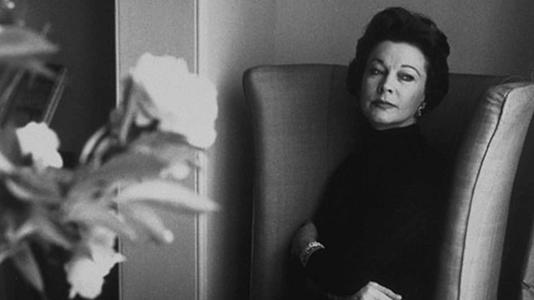
Vivien Leigh photographed by Roloff Beny in 1958. © El Español
Backstory
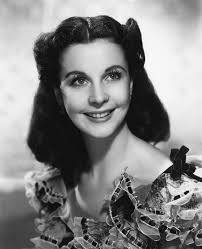 Vivien Leigh (5 November 1913 – 8 July 1967) was a British actress, who won the Academy Award for Best Actress twice, for her performances as Scarlett O'Hara in Gone with the Wind (1939) and Blanche DuBois in the film version of A Streetcar Named Desire (1951), a role she had also played on stage in London's West End in 1949.
Vivien Leigh (5 November 1913 – 8 July 1967) was a British actress, who won the Academy Award for Best Actress twice, for her performances as Scarlett O'Hara in Gone with the Wind (1939) and Blanche DuBois in the film version of A Streetcar Named Desire (1951), a role she had also played on stage in London's West End in 1949.
After completing her drama school education, Vivien Leigh appeared in small roles in four films in 1935 and progressed to the role of heroine in "Fire Over England" (1937). Lauded for her beauty, Leigh felt that her physical attributes sometimes prevented her from being taken seriously as an actress.
Despite her later fame as a screen actress, Leigh was primarily a stage performer. During her 30-year career, she played roles ranging from the heroines of Noel Coward and George Bernard Shaw comedies to classic Shakespearean characters such as Ophelia, Cleopatra, Juliet, and Lady Macbeth.
Photo: Wikipedia
Later in her life, she performed as a character actress in a few films.
At the time, the public strongly identified Vivien Leigh with her second husband, Laurence Olivier, who was her spouse from 1940 to 1960. Leigh and Olivier starred together in many stage productions, with Olivier often directing, and in three films.
She earned a reputation for being difficult to work with, and for much of her life she had bipolar disorder, as well as recurrent bouts of chronic tuberculosis, which was first diagnosed in the mid-1940s and ultimately led to her early death at age 53.
The twilight years
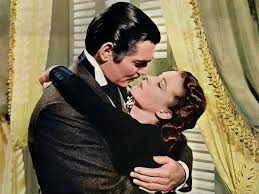 Vivien, who had contracted the disease at thirty-five, continued to smoke eighty cigarettes a day, a habit acquired during the filming of Gone with the Wind, when a benzedrine-intoxicated David O. Selznick demanded twelve-hour workdays and Victor Young hurled intolerable profanity at her for daring to make suggestions on how to play the impetuous Scarlett O'Hara.
Vivien, who had contracted the disease at thirty-five, continued to smoke eighty cigarettes a day, a habit acquired during the filming of Gone with the Wind, when a benzedrine-intoxicated David O. Selznick demanded twelve-hour workdays and Victor Young hurled intolerable profanity at her for daring to make suggestions on how to play the impetuous Scarlett O'Hara.
After separating from Laurence Olivier, Vivien commented that she did not want to live long, because although she was not unhappy with Jack Merivale, her last partner, the passion was only a pale memory and not an everyday experience.
Leigh with Gable in"Gone with the Wind"
The romance with "Larry", the name friends and family used to refer to Olivier, had included great storms, intense moments of anger, frenzy and madness, but it had also taught him that paradise was not 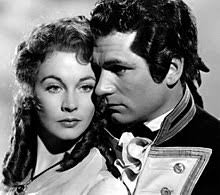 a dream, a mere fantasy, but a sweet torment akin to Scarlett's unrequited love for Ashley Wilkes. "I longed for that sweet torment and couldn't bear to think that it was something irretrievably lost."
a dream, a mere fantasy, but a sweet torment akin to Scarlett's unrequited love for Ashley Wilkes. "I longed for that sweet torment and couldn't bear to think that it was something irretrievably lost."
Tuberculosis, depression, excessive tobacco and alcohol consumption aged Vivien prematurely, but they did not destroy her beauty or diminish her elegance.
In the main photograph above she only needs to tilt her head slightly to give off sensuality and mystery. Wearing a black suit and arms crossed, the jewels she displays (a ring, a bracelet and earrings) convey not ostentation, but refinement.
Leigh with Olivier
Vivien, who had contracted tuberculosis at the age of thirty-five, continued to smoke eighty cigarettes a day at the end of her life
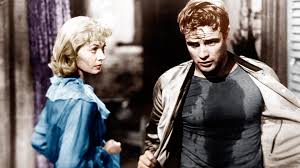 Trapped by a spiral of euphoria and sadness, illusions and disappointments, she barely knew happiness. Unstable, tragic, and intelligent, she externalized her own inner torment in A Streetcar Named Desire (Elia Kazan, 1951), where she gives life to a kind of Scarlett O'Hara stripped of Tara and with a faded beauty.
Trapped by a spiral of euphoria and sadness, illusions and disappointments, she barely knew happiness. Unstable, tragic, and intelligent, she externalized her own inner torment in A Streetcar Named Desire (Elia Kazan, 1951), where she gives life to a kind of Scarlett O'Hara stripped of Tara and with a faded beauty.
This portrayal brought her second Oscar for Best Actress.
Leigh with Brando in A Streetcar Named Desire
Her Blanche Dubois is not far from the Norma Desmond of The Twilight of the Gods (Billy Wilder, 1950). Gloria Swanson plays an old silent film actress who longs to regain the fame destroyed by the success of talkies. That's not the case for Vivien Leigh, who never wanted to be a star.
However, Blanche and Norma share a fear of old age. They know that they are withering away and their imagination does not stop travelling to the past, looking for those moments of happiness and splendour that their beauty gave them. Both abuse alcohol and groom themselves with great care, trying to hide the ravages of age.
Despite her twilight appearance, Vivien Leigh still exudes strength, ambition, and fervor, but her eyes avoid direct confrontation with the camera.
Vivien Leigh died in 1967 at the age of 53. We would have preferred her to live to be 102, like Olivia de Havilland, her partner and rival in Gone with the Wind.
More than half a century has elapsed since then, but anyone who desires to know passion, courage, romantic despair, obstinacy, nostalgia, the most flowery fantasy, and the most foolish pride, is still compelled to follow in the footsteps of Scarlett O'Hara through the red clay of Tara or under the magnolias of The Twelve Oaks.
It's not true that the wind blows everything away. The beautiful and the good always endure. Vivien Leigh is not a handful of dust, but a rose of imperishable beauty. In 1963, a gardener created a pink with her name on it. Fragrant, crimson red and with black shading on the edge of its petals, it defeats death every time. That rose is really Vivien Leigh, and because of her, the world is a happier and brighter place.
© The Culture Vulture
Acknowledgements:
Country Living Magazine (photos)
El Español
Facebook
Paul Whitelock (Translator)
Rafael Narbona (author of article in El Español)
Wikipedia
Tags:
Academy Award for Best Actress, alcohol consumption, Ashley Wilkes, "A Streetcar Named Desire", Blanche DuBois, Brando, character actress, Clark Gable, Cleopatra, Country Living Magazine, Culture Vulture, depression, Facebook, "Fire Over England", Gable, George Bernard Shaw, "Gone with the Wind", Juliet, Lady Macbeth, Larry, Lawrence Olivier, Marlon Brando, Noel Coward, Olivia De Havilland, Olivier, Ophelia, Oscar, Paul Whitelock, Rafael Narbona, Roloff Beny, Scarlett O'Hara, tobacco consumption, Tuberculosis, Vivien Leigh, West End, Wikipedia